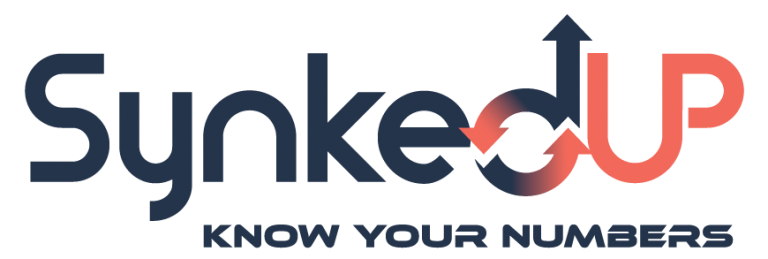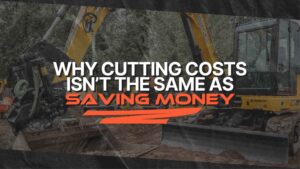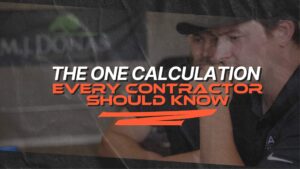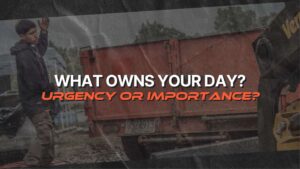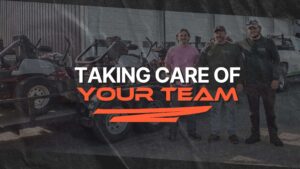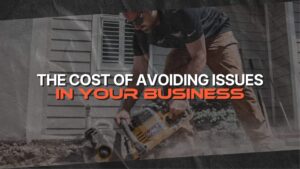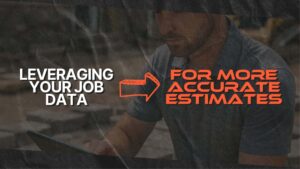How to Properly Recover Equipment Costs in Your Landscape Company
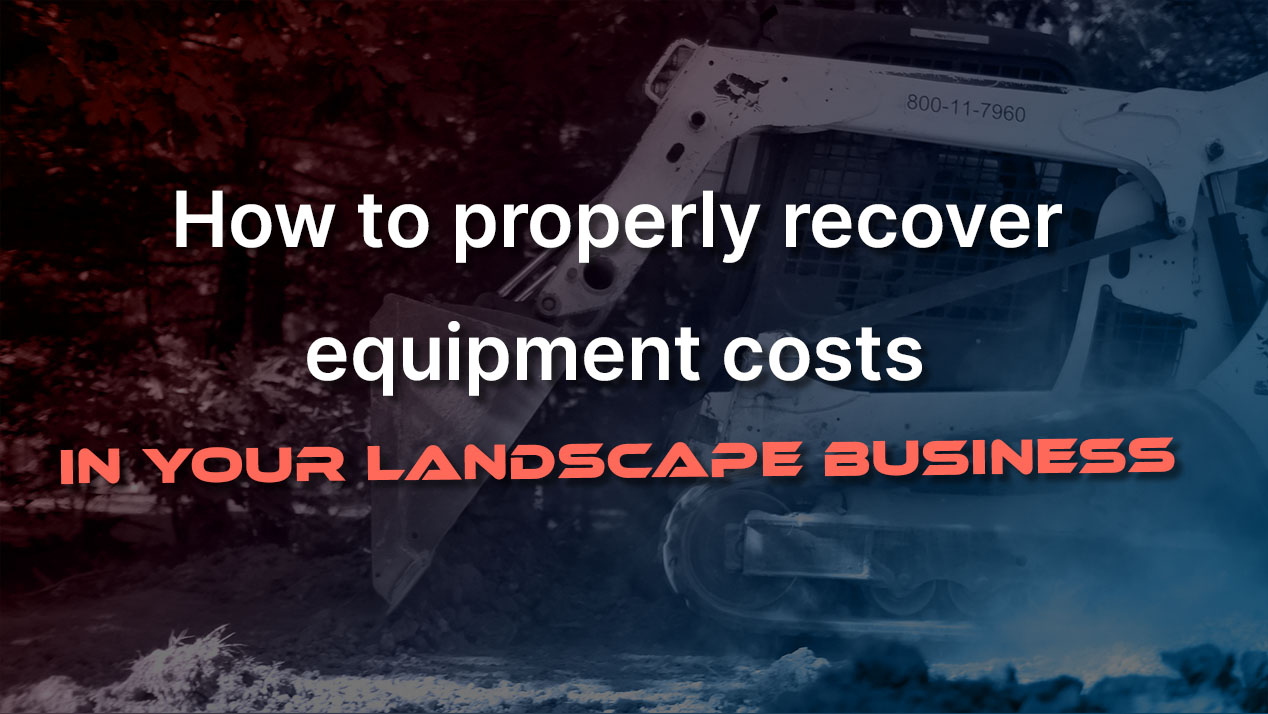
Do you know your equipment costs?
It’s that time of year when a lot of landscape contractors take a look at the weather and decide “yeah, nah”, today will be an office day and we’ll keep the coffee going all day. Rather than work outdoors, it’s the perfect time to do some figuring and make sure the rates you’re charging are set properly, allowing you to cover all of your equipment costs plus ensure you hit your net profit goals.
Today I’m going to drill into how to ensure you are recovering all of your costs for all of the equipment you own in your business.
Because there’s more there than meets the eye.
There is a sneaky thing called “depreciation” on equipment that can ruin your bank account’s day.
(not to be confused with “depreciation” in the context that your accountant refers to for taxes. Depreciation for taxes and depreciation for budgeting and setting your pricing are two different things)
How to calculate and cover your equipment costs
The “easy-to-see” and visible expenses in equipment are things like fuel, repair, and maintenance, and the cash transaction or loan payment itself to pay for it.
The sneaky one, not so visible, is that depreciation.
And it’s a significant one.
What exactly is depreciation?
It’s the amount of value that the equipment loses as it gets older and more worn.
Example:
You buy a $100k machine.
You keep and use it for 10 years, then sell it for let’s say $30k.
It lost $70k in value since you bought it.
That $70k is the depreciation.
Let’s take it a step further.
Let’s break that depreciation down further.
You owned that equipment for 10 years, so if you divide the $70k in depreciation by the 10 years, that means it costs you $7k per year to own that machine. Not counting repairs, maintenance, fuel, operator, etc.
And let’s say you put 500 hrs per year on that machine. That $7k divided by 500 hours means it costs you $14/hr in only depreciation.
Why it’s tricky
The tricky part is that depreciating equipment cost is not visible anywhere in your P&L or cash transactions in your bank.
It’s easy to not even notice and forget that those costs even exist.
This means it’s easy to forget them when calculating the rates that you charge your customers.
How to recover those depreciating equipment costs
There are two mainstream schools of thought on how to recover that equipment depreciation cost.
- Recover it by including it in your hourly or daily rate for that piece of equipment
- Recover it by counting that depreciation as an overhead expense
There are pros and cons to each method.
The important part is not which method you choose. The important part is that you are aware of the pros and cons of each method avoid the pitfalls and leverage the pros.
Recovering depreciation in your hourly/daily rate:
Pros:
- the burden of that equipment cost gets billed to the customers/jobs where the equipment gets used.
- It does not crank your hourly rates up on jobs where you don’t use the equipment (Because the hourly rate carries all the equipment depreciation cost in the overhead recovery portion of the rate.
Cons:
- It’s easy to forget equipment in your bid, but then you want to use it once on site.
- It’s easy to get to the end of the year and realize you didn’t bill enough of days or hours for that equipment. Leaving you holding the bag
Recovering depreciation in your overhead:
Pros:
- It’s simple and as long as you sell jobs, your equipment depreciation is getting covered. No “forgetting” to add it to the estimate, or not billing enough of hours/days in a year.
- You are paying for that equipment whether you use it or not. In this model, it’s always getting paid for, regardless of whether you are selling “shovel labor” jobs or “equipment gets used” jobs.
Cons:
- If you do both maintenance services and installation jobs, aka jobs where the equipment gets used and jobs where it does not get used, the hourly rate for where the equipment does not get used is inflated as opposed to if you were not recovering equipment depreciation in your overhead (and inherently your hourly rate). The solution is to build two budgets in this example: One budget for maintenance, and one for installation.
You can pick your preferred method. It’s just math either way. With the goal of correctly and appropriately recovering all those equipment costs so that what was supposed to be your profit actually ends up being profit.
Everyone will have a preference according to their own business model and needs. Pick your preferred method. There is not really a way that is more “right” than the other.
If you want to play with the numbers a bit and explore what method you’d like to use; I made a free budgeting tool available to anyone, even if you don’t use SynkedUP.
AND… if you’d like to dig in and then want to have an expert look over your shoulder at your budget, schedule a free budget call with our team! We’ll sanity-check it with you.
If you do use SynkedUP, and want to dig into this and review your budget inside the software, book a call with our experts! (only for active SynkedUP users)
I hope this was helpful! Hit me up in the replies or comments for any specific questions you have or any comments you’d like to add.
Cheers!
Weston Zimmerman

Weston Zimmerman
CEO and co-founder
See SynkedUP in action
Related Articles
What is the Most Difficult Challenge You’ve Overcome?
Cutting costs isn't the same as saving money. Learn how to use leverage, not panic, to drive real profit and...
Why Time Tracking is Critical for Contractors
Cutting costs isn't the same as saving money. Learn how to use leverage, not panic, to drive real profit and...
Why Cutting Costs Isn’t the Same as Saving Money
Cutting costs isn't the same as saving money. Learn how to use leverage, not panic, to drive real profit and...
Slow Down to Speed Up
A quick leadership gut check: Are you building what really matters? Slow down, realign, and lead with intention.
The One Calculation Every Contractor Should Know
Contractors: If you’re not factoring in overhead, you're not pricing right. Learn how to calculate breakeven and stop guessing your...
What Owns Your Day? Urgency or Importance?
Stuck in a cycle of chaos and urgent tasks? Break the cycle with better systems, clear processes, and leadership that...
Taking Care of Your Team
Leadership isn't barking orders - it's listening, appreciating, and building problem solvers. Here's how to lead without burning out.
The Cost of Avoiding Issues in Your Business
Avoiding stuff in business adds up, with interest. Don't try harder, build systems that make success default. Do hard things,...
Leveraging Your Job Data for More Accurate Estimates
Stop estimating from the gut. Track time, collect job data, and turn it into faster, more accurate production rates.
How the Best Contractors Ensure Profitability
Running over estimated hours is one of the biggest silent profit killers in contracting. Here's how to track it, catch...
